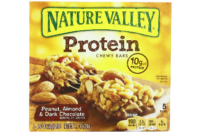As parents carefully ration their children’s haul of Halloween candy during the coming weeks, they may miss a subtle shift that’s occurred in the treats pile: better-for-you sweets.
According to James Russo, senior v.p. of Global Consumer Insights at Nielsen, “Today’s consumers are reaching for a mix of healthy and indulgent options. The demand for better-for-you food (and snacks) is something we are seeing across the board in the consumer space. In fact, 45 percent of global respondents within a 2015 Nielsen survey on global snacking said that healthy ingredients were very important when it came to snacks.”
But that’s easier said than done, the Nielsen exec acknowledges.
As Russo explains, “However, the unique challenge within the candy space is finding the right balance between healthy and enjoyable. Candy manufacturers are reformulating products and creating new innovations within the space to meet this need. As a result, the tide is slowly shifting and consumers are choosing to indulge with better-for-you options.”
Candy by the numbers:
Statistics compiled by Nielsen provide a quick snapshot of the trend:
2014 candy sales totaled
$20.9 billion, up from $18.6 billion in 2011
Of that, candy with fat presence claims accounted for $1.6 billion in 2014, down from $1.7 billion in 2011.
Fat free
$882 million
That's up from $818 million in 2011.
Reduced fat
$456 million
This has seen biggest loss since 2011 when it accounted for $621 million.
Low fat
$240 million
That's up from $226 in 2011.
Sugar conscious candy
$567 million
That's an increase of approximately $50 million since 2011.
Sugar free
$563 million
That's up from $515 in 2011.
No sugar added
$3 million
That's up from $1 million in 2011.
Less sugar
$457 thousand,
That's up from $317 thousand in 2011.
Reduced Calorie, calorie free and low calorie
$436 million
That's up from $18.6 in 2011.
GMO free
$72 million.
Has more than doubled sales since 2011 when sales accounted for $29 million.
Organic
$61 million
That's up from $37 million in 2011.
Source: Nielsen Wellness Track; Total U.S. – All Outlets Combined, plus Convenience Stores – includes grocery stores, drug stores, mass merchandisers, convenience stores, select dollar stores, select warehouse clubs, and military commissaries (DeCA); 52 weeks ending 12/31/2011 and 12/27/2014;l UPC-coded items only. Note: Nielsen Wellness Track was created to measure the volumetric impact of wellness claims. Nielsen Wellness Track characteristics are based off of information (including claims, endorsements, brand name) found on all sides of the packaging. Nutrition facts are not used.










